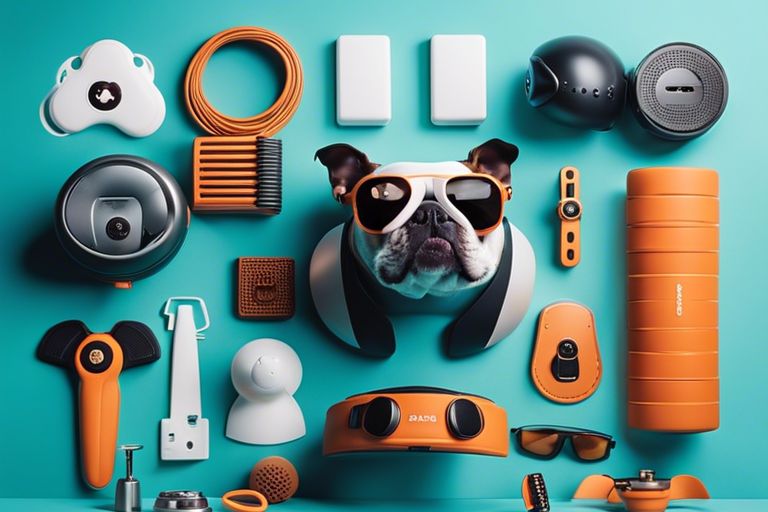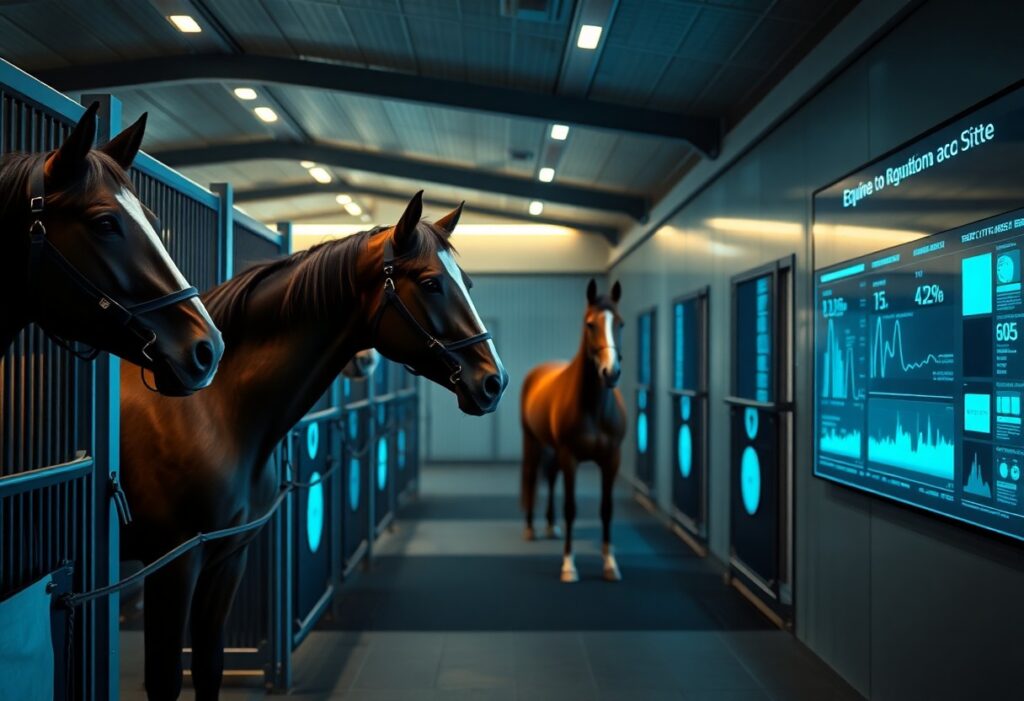With advancements in technology, modern horse care has been revolutionized in ways that benefit both you and your equine companions. From smart feeders that ensure proper nutrition to GPS tracking devices for monitoring your horse’s exercise and health, technology is playing a crucial role in improving the well-being of horses today. By incorporating these innovative tools into your horse care routine, you can optimize their health and performance like never before.


The Evolution of Horse Care
From Traditional to Technological
For centuries, horse care relied heavily on traditional methods passed down through generations. From grooming tools to feeding practices, the care of horses was deeply rooted in old-fashioned techniques. However, with the advent of technology, a significant shift has occurred in the way we care for our equine companions.
The Impact of Digitalization on Horse Health
The digital age has revolutionized horse care in ways previously unimaginable. **From equine fitness trackers to telemedicine services**, technology has transformed the monitoring and management of horses’ well-being. **Digital tools now allow you to track your horse’s vital signs in real-time, receive health alerts, and even consult with veterinarians remotely**. This level of connectivity and data-driven insights has **greatly improved early detection of health issues** and **enhanced overall equine healthcare**.
Impact: Embracing digitalization in horse care has proven to be a game-changer in promoting the health and well-being of your equine companions. By leveraging tech advancements, you can now proactively monitor your horse’s health, promptly address any concerns, and collaborate with professionals to ensure optimal care.

Monitoring Horse Health
Little did you know that technology plays a crucial role in monitoring your horse’s health. With advancements in wearable technology, advanced sensors, and data analysis, you can keep a close eye on your horse’s well-being like never before.
Wearable Technology for Horses
Wearable technology for horses has revolutionized the way we track their health and performance. These devices can monitor your horse’s vital signs, activity levels, and even their GPS location in real-time. By using wearable technology, you can receive instant alerts if something seems off with your horse, enabling you to take quick action.
Advanced Sensors for Real-time Monitoring
Sensors for horses are now more advanced than ever, allowing for real-time monitoring of various health metrics. These sensors can track everything from heart rate and respiratory rate to temperature and even hydration levels. By utilizing advanced sensors, you can detect issues early and provide the necessary care promptly.
- Vital Signs Monitoring
Heart Rate Respiratory Rate Temperature Hydration Levels
Data Analysis for Early Detection of Health Issues
Wearable technology and advanced sensors generate a vast amount of data that can be analyzed to detect health issues early. By leveraging data analysis tools, you can identify patterns and trends in your horse’s health, allowing you to intervene before any serious problems arise.
Nutrition and Feeding
After addressing your horse’s general well-being, nutrition plays a key role in maintaining your horse’s health and performance. With modern technology, various advancements have been made in the field of equine nutrition to ensure your horse receives the best care possible.
Personalized Dietary Plans through AI
On your quest for optimal horse care, personalized dietary plans created through Artificial Intelligence (AI) can revolutionize the way you feed your equine companion. By inputting specific details about your horse such as age, weight, activity level, and health conditions, AI algorithms can analyze this data to generate a tailored diet plan that meets your horse’s exact nutritional needs.
Automated Feeding Systems for Optimal Nutrition
Nutrition is the foundation of your horse’s health, and automated feeding systems can enhance this aspect of care. These systems can dispense specific portions of feed at scheduled times, ensuring your horse receives the correct amount of nutrition throughout the day. They can also be programmed to accommodate dietary restrictions or special feeding requirements, promoting optimal health and well-being for your horse.
To ensure your horse receives the right nutrients in the right quantities, automated feeding systems are equipped with sensors that can monitor your horse’s intake and adjust feed amounts accordingly. This real-time data collection and adjustment process minimizes the risk of overfeeding or underfeeding, contributing to your horse’s overall health and performance.
The Role of Microbiome Analysis in Equine Health
To gain deeper insights into your horse’s health, considering the role of microbiome analysis can be crucial. The equine gut microbiome plays a significant role in overall health, digestion, and even behavior. By analyzing the microbial communities present in your horse’s gut, veterinarians and nutritionists can tailor dietary recommendations to promote a balanced and healthy gut environment for your horse.
For a comprehensive approach to your horse’s well-being, monitoring the equine microbiome through advanced technologies can provide valuable information that can enhance your horse’s health and quality of life. By understanding the delicate balance of microorganisms in your horse’s gut, you can make informed decisions to support their overall well-being.
Exercise and Training
Your horse’s exercise routine plays a critical role in their overall well-being and performance. Utilizing technology in training can enhance the way you work with your horse, leading to improved outcomes and a stronger bond between you and your equine companion.
Virtual Reality for Enhanced Training Experiences
Exercise in modern horse care now includes the innovative use of virtual reality (VR) technology to simulate different riding environments and scenarios. By immersing yourself in these virtual worlds, you can practice various techniques, navigate challenging terrains, and even experience competitive events—all from the safety of your training arena. This not only adds variety to your training sessions but also helps build confidence and skills in both you and your horse.
AI-powered Performance Analysis for Improved Results
AI-powered tools can analyze your horse’s movement patterns, stride length, heart rate, and more to provide valuable insights into their performance. These technologies can detect subtle changes that may indicate discomfort or the early signs of injury, allowing you to adjust training regimens accordingly. By incorporating these tools, you can optimize your horse’s training program and prevent potential health issues, ultimately leading to enhanced performance and longevity.
It’s fascinating how AI algorithms can process vast amounts of data in real-time, giving you instant feedback on your horse’s performance. This not only saves time but also enables you to make informed decisions based on concrete data, rather than subjective observations.
Smart Tack and Equipment for Enhanced Safety
Enhanced safety during exercise is paramount, and smart tack and equipment are revolutionizing the way we protect our horses during training sessions. These advanced gadgets can monitor vital signs, detect irregularities, and even alert you to potential dangers such as overheating or excessive fatigue. Investing in smart tack and equipment can provide you with peace of mind and a proactive approach to your horse’s well-being.
The integration of technology into horse care has opened up a world of possibilities for improving safety and performance during exercise. By leveraging these tools, you can take your training sessions to the next level while prioritizing the health and happiness of your equine partner.
Veterinary Care and Diagnostics
Many advances in technology have transformed the field of veterinary care, enhancing the health and well-being of horses. From telemedicine for remote consultations to advanced imaging technologies for accurate diagnoses, technology plays a crucial role in modern horse care.
Telemedicine for Remote Consultations
Diagnostics: Telemedicine allows you to connect with veterinary professionals remotely, enabling quick consultations without the need for a physical visit. Through video calls and chat options, you can seek advice, discuss symptoms, and receive guidance on the next steps for your horse’s care.
Advanced Imaging Technologies for Accurate Diagnoses
Diagnostics: Advanced imaging technologies such as MRI, CT scans, and ultrasound provide detailed insights into your horse’s internal health. By visualizing soft tissues, bones, and organs, veterinarians can accurately diagnose various conditions and tailor treatment plans accordingly.
- MRI:
Usage: Visualizing soft tissues and joint problems. Benefits: Pinpointing specific issues for targeted treatment. - CT Scan:
Usage: Detecting bone abnormalities and internal injuries. Benefits: Guiding surgical interventions with precision.
AI-assisted Diagnosis for Faster Treatment
For instance, telemedicine platforms now integrate artificial intelligence (AI) algorithms to assist in analyzing medical images and data. This technology can help identify patterns, predict outcomes, and suggest treatment options, leading to quicker and more effective interventions for your horse.
Diagnosis: By leveraging AI technology, veterinarians can efficiently diagnose conditions, accelerating the treatment process and improving outcomes. AI-assisted diagnosis complements traditional veterinary expertise, providing a comprehensive approach to horse healthcare.

Safety and Security
All horse owners prioritize the safety and security of their beloved animals. Technology plays a crucial role in ensuring that your horses are protected and secure at all times. From surveillance systems to GPS tracking and emergency response systems, innovative technologies have revolutionized the way we care for our equine companions.
Surveillance Systems for Enhanced Barn Security
One important aspect of horse care is ensuring that your barn and its surroundings are safe and secure. **Surveillance systems** equipped with cameras and motion sensors allow you to monitor your horses remotely, providing you with peace of mind knowing that you can keep an eye on them even when you’re not physically present. In case of any unusual activity or emergencies, these systems can alert you immediately, enabling you to take swift action to protect your horses.
GPS Tracking for Lost or Stolen Horses
**Stolen** horses are every horse owner’s worst nightmare. However, with GPS tracking technology, you can significantly improve the chances of recovering a lost or stolen horse. By attaching a GPS tracking device to your horse’s halter or bridle, you can pinpoint their location accurately in real-time. This not only helps in locating a missing horse quickly but also acts as a deterrent to potential thieves.
The **GPS tracking** devices available in the market today are lightweight, durable, and designed to withstand the rigors of equestrian activities. They provide you with constant updates on your horse’s whereabouts, giving you **the** peace of mind that you can quickly locate them in case of an emergency.
Emergency Response Systems for Quick Action
**An** integral part of ensuring the safety of your horses is having an efficient emergency response system in place. **Systems** like automatic alert systems and mobile applications can be lifesavers in critical situations. In the event of a medical emergency or a natural disaster, these systems allow you to alert emergency services or notify nearby contacts immediately, ensuring that help reaches your horses without delay.
**Emergency Response Systems** are your invaluable partners in times of crisis, providing you with a quick and effective way to respond to emergencies and safeguard the well-being of your horses. Investing in these technologies is a proactive step towards ensuring that you can provide the best care for your equine companions.
Summing up
Upon reflecting on the role of technology in modern horse care, it is evident that advancements in this field have revolutionized the way we care for our equine companions. From wearable technology that monitors health and performance to automated feeders that ensure proper nutrition, technology has significantly improved the well-being of our horses. By embracing these innovations, you can enhance the overall care and management of your horse, leading to healthier and happier animals.
Q: What are some ways technology has improved horse care?
A: Technology has improved horse care in several ways, such as providing advanced monitoring systems for health and fitness tracking, automated feeding systems, and innovative treatments for injuries and illnesses.
Q: How has digital technology changed communication between owners and equine professionals?
A: Digital technology like mobile apps and online platforms have made communication between owners and equine professionals more efficient and convenient, allowing for easy access to health records, scheduling appointments, and sharing important information in real-time.
Q: What role do wearable devices play in monitoring the health and performance of horses?
A: Wearable devices, such as GPS trackers, heart rate monitors, and activity sensors, play a crucial role in monitoring the health and performance of horses by providing valuable data on their movement, exercise levels, and vital signs, helping owners and professionals make informed decisions about their care.
Q: How is telemedicine being used in equine veterinary care?
A: Telemedicine is being increasingly used in equine veterinary care to allow for remote consultations, diagnosis, and treatment recommendations, reducing the need for in-person visits and providing access to expert advice quickly and efficiently.
Q: What are some examples of technological advancements in stable management and maintenance?
A: Technological advancements in stable management and maintenance include automated cleaning systems, temperature and humidity control systems, security cameras for monitoring, and smart feeding systems that dispense specific portions of feed at scheduled times.










